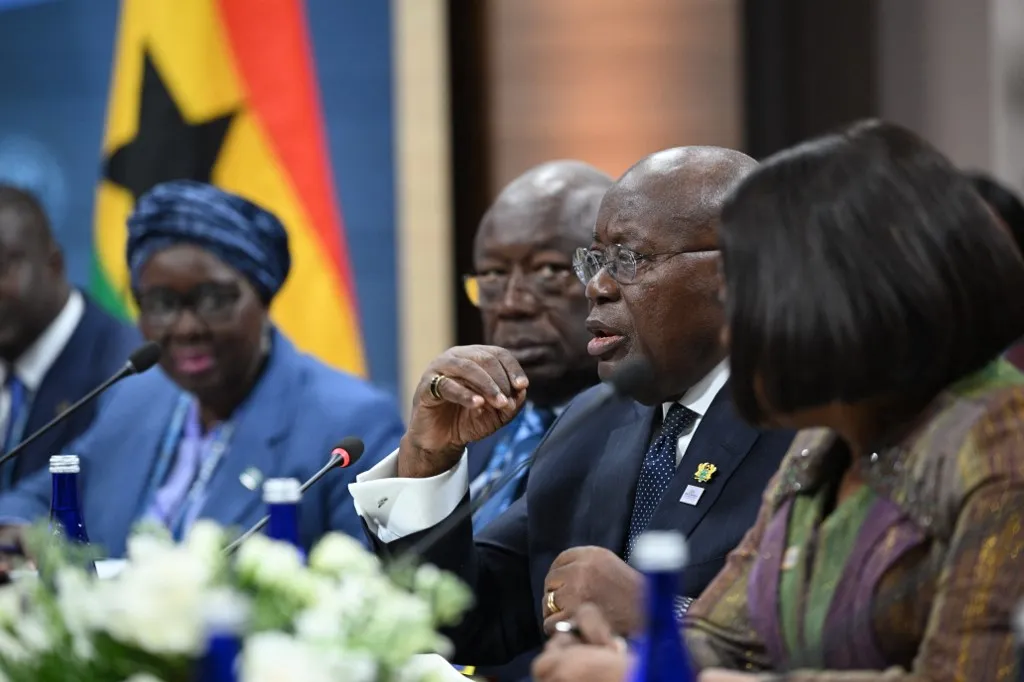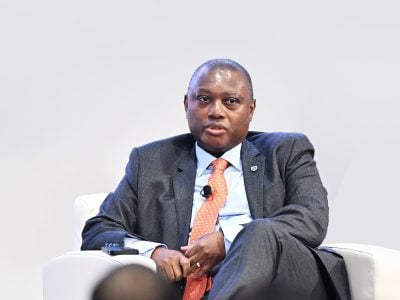After the Ghanaian government reached agreement on a $3bn lending package with the International Monetary Fund on 12 December, the country’s financial markets rallied. The cedi, Ghana’s national currency, rebounded dramatically from 12.9/$ to 8.5/$. Meanwhile, sovereign bond spreads narrowed by nearly 200 basis points.
After an extended period of financial crisis, the emergency loan seemed inevitable and overdue to many economists. But the outlook for Ghana hadn’t always been so gloomy.
Long considered a darling of the eurobond markets, Ghana benefited from decades of rising export revenues – principally gold, cocoa and oil. It has one of Africa’s most educated workforces and a strong democratic track record. Between 2000 and 2019, GDP expanded at an average annual rate of 6%. The current government has also been praised for its efforts to provide up to 70% of the population with national health insurance.
An ample inflow of investment lay partly behind this putative success. After Ghana’s debt was written down in the Heavily Indebted Poor Countries initiative (or HIPC, an early-2000s debt cancellation campaign backed by the IMF), private lending took off. Ghana issued its first eurobond in 2007, and has returned to the market 16 times since then. By March 2022, one-quarter of Ghana’s public debt was owed to external commercial creditors.
Ghana’s long fall from grace
However, excessive foreign borrowing can expose countries to sudden shifts in risk perception. From 2014, headwinds triggered by the end of a commodity “super cycle” undermined Ghana’s balance of payments position. At roughly the same time, the government issued billions of dollars in bonds to support the country’s over-leveraged financial system. Public spending then spiralled ahead of the 2018 elections.
Fiscal deficits persisted until 2020, before the impacts of Covid-19 hit Ghana’s economy. Sharp falls in export earnings and remittance inflows, coupled with emergency healthcare spending, raised the fiscal gap to an eye-watering 15.2% of GDP (or $4bn). After a brief reprieve in 2021, the situation deteriorated again in February of last year. Ghana, a net food importer, suffered from the food price spike triggered by the Russia-Ukraine conflict.
In response to war-induced inflation, the US Federal reserve raised interest rates by three percentage points between March and October, boosting the value of the dollar against developing country currencies. Over that period, Ghana’s cedi fell by more than 43% against the greenback, placing it bottom of the 148 currencies ranked by a Bloomberg currency tracker. Inflation, meanwhile, exceeded 40% by the fourth quarter of 2022.
In addition to higher import costs, the dollar’s rise made Ghana’s US dollar debt – estimated at over half the country’s total liabilities – more expensive.
“Our stock of debt has increased by 93bn Ghana cedis [$7bn] due to the currency depreciation since the beginning of 2022,” Ghana’s finance minister, Ken Ofori-Atta, told parliament last November.
Ofori-Atta also claimed that foreign currency interest payments were absorbing up to 70% of government revenues. As with other countries in the region, Ghana found itself fighting crises on multiple fronts. It’s little wonder that President Akufo-Addo recently spoke of a confluence of “malevolent forces” crippling the West African nation. The upshot is that Ghana had little choice but to default on its sovereign debt.
A damaging debt default
On 19 December, Ghana halted payments to external bondholders (up to $13bn) and most bilateral lenders. In a statement, the Ministry of Finance stressed that it “stands ready to engage… with external creditors”. While many analysts have interpreted recent official statements to mean that the government wants bondholders to take a 30% haircut on the principal and to forgo some interest payments, it could be more, according to sources involved in negotiations.
Domestic lenders (barring pension funds, who have been exempted from the local restructuring programme) won’t get off lightly either. Last month, the government announced plans to swap $10.5bn worth of local currency debt for new instruments with longer maturities and lower interest rates, but with no haircuts.
The new coupon payment schedule – 0% in 2023, 5% in 2024 and 10% from 2025 – will reduce domestic servicing costs (currently carrying an effective interest of 17.5%). On the other hand, lower interest payments will impose losses on banks, which will slow credit creation and GDP growth.
Long road out of crisis
Looking ahead, the road out of Ghana’s economic crisis will be rocky. Lowering debt service costs though an IMF-backed restructuring plan will be complemented by harsh austerity measures. And while the extent of the squeeze will be measured against losses imposed on creditors, the IMF has already suggested that up to five years of lower spending and higher taxes will be needed to bring Ghana’s debt to “sustainable” levels.
In the meantime, people with knowledge of deliberations have suggested that internal disagreements at the Ministry of Finance level are slowing down negotiations; the Ministry recently extended its domestic exchange deadline to 16 January, in order to “secure internal approvals“. Some officials fear that failure to complete negotiations in a timely and coordinated manner could delay a much-needed recovery.
A speedy resolution to the debt crisis may have been further stalled this week following the government’s request for support under the G20’s Common Framework programme (which seeks comparable resolution treatment for public and private creditors). Admittedly, Ghana has sought assurances that negotiations will be expedited before talks begin. However, long delays faced by other countries enlisted on the program does not augur well.
Cynics will point out that after HIPC, Ghana’s debt-to-GDP ratio nearly tripled from 31.3% in 2011 to 84.9% today. They might also call attention to the fact that Ghana’s latest IMF deal is its 17th since independence in 1957. But this line of attack falls wide of the mark. The problems undermining Ghana’s economy are being felt far beyond its borders, with many countries feeling the pinch from global movements in interest rates and asset prices.
Debt distress looms across Africa
According to the Fitch ratings agency, the aggregate debt servicing costs due in sub-Saharan Africa over the next two years will be significantly higher than the level seen in 2019-21. As such, the risk of onerous debt repayments catalysing economic crises across the continent will be marked. Defaulters should brace themselves for a period of slow growth and social instability.
In addition to Ghana, the IMF has flagged the governments of Kenya, Nigeria and Morocco as inching toward debt distress. Tanzania and Benin have also attracted emergency support from the Fund. This dangerous drift could be interpreted as a series of national crises. But these countries are seen as recent success stories across Africa’s business landscape. A spate of debt crises may thus call into question the entire model of market-based development finance.
Alexander Kozul-Wright is a senior researcher and financial advisor for the Third World Network
Want to continue reading? Subscribe today.
You've read all your free articles for this month! Subscribe now to enjoy full access to our content.
Digital Monthly
£8.00 / month
Receive full unlimited access to our articles, opinions, podcasts and more.
Digital Yearly
£70.00 / year
Our best value offer - save £26 and gain access to all of our digital content for an entire year!
 Sign in with Google
Sign in with Google 



